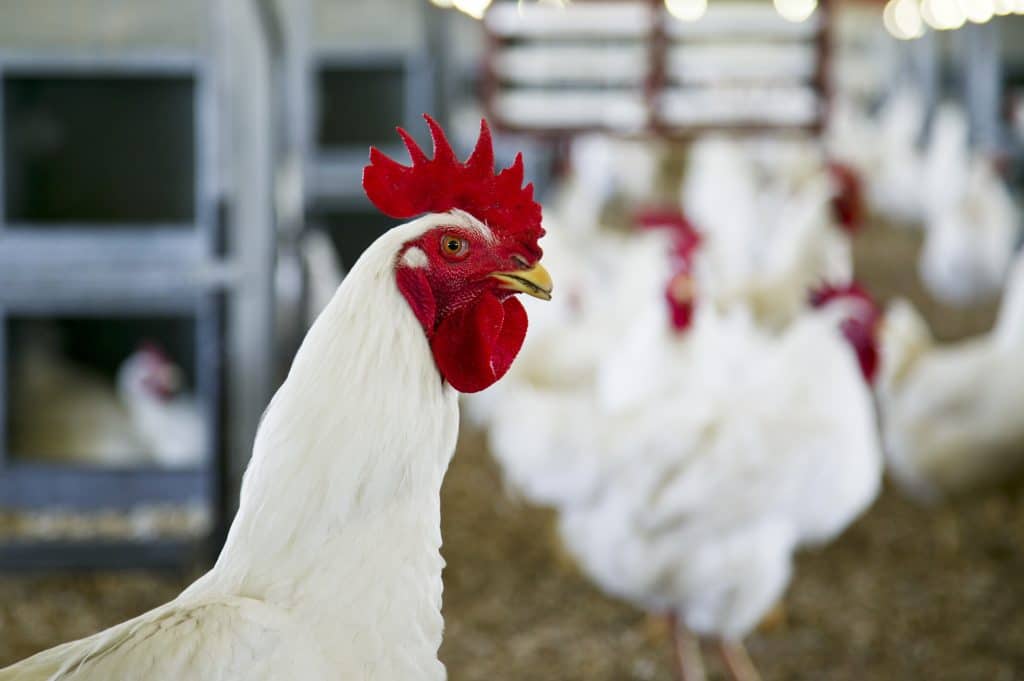Chicken manure is a good source of fertiliser, but is also a useful indicator of flock health and can serve as an early warning sign of disease. Therefore, it is important to know what healthy manure looks like.
Healthy manure
Chickens produce 10 to 15 digestive droppings each day. Healthy manure consists of three parts – urates, urine and faeces, and there is a separate caecal dropping.
Urine: As with any other animal’s urine, chicken urine is clear and watery. Fresh manure contains around 76% water, and more urine and urates are produced than faeces each day. Occasionally, urine and urates can mix and form a cloudy liquid. If this mixture is the only excrement that is seen, it could indicate that a bird has stopped eating due to illness.
Urates: These are the crystalline component of urine and look like a chalky white coating on faeces that isn’t watery, nor quite solid.
Faeces: This is the tubular-shaped section in the middle of chicken droppings that consists of digested matter. It may be coiled, straight or broken into smaller, cylindrical pieces. Manure consistency can range from firm to runny in high ambient temperatures when chickens’ water consumption increases.
Depending on feed, healthy solid faeces can be varying shades of yellow-brown to green. Yellower faeces result from a diet high in grains, while free-range birds produce greener manure. Normal fresh faeces usually aren’t very smelly, with the exception of that from brooding hens due to the build-up of manure with lack of movement.

Caecal droppings
The caecum is a set of two blind-ending tubes at the junction of the large and small intestines, which plays an important role in fermenting nutrients to produce short-chain fatty acids, a source of energy to the body. Caecal droppings are foul-smelling, range from mustard-yellow to caramel-brown and dark-brown and have a thick, wet consistency with no urates or digested matter. They consist of the normal evacuated contents of the caecum that occur once/twice daily.
Unhealthy manure
When chicken manure shows a sudden change in the colour, consistency or smell, it can indicate infection in the digestive tract. These are the signs:
Urine and urates: Green or yellow urine and urates indicate a liver problem. Red could be a sign of kidney disease, internal bleeding low in the digestive tract or lead poisoning. Increased urine can be caused by increased water consumption or a bacterial disease. Increased or watery white urates with no solids can be caused by dehydration or a kidney problem.
Faeces: Pea-green faeces indicate liver damage, while black or tar-like faeces could be caused by internal bleeding high in the digestive tract. Foamy, bubbly, pale-yellow faeces are caused by parasites. White or clay-coloured faeces show problems with the pancreas and digestive system. Blood or membranes in the faeces can be caused by coccidiosis or enteritis from a bacterial infection.
Lumpy faeces with undigested food is caused by incomplete digestion or stunting syndrome. Diarrhoea can be caused by a bacterial infection in the gut, viral infection in the kidneys, a sudden diet change, infection in the oviduct or a toxin in something the birds have eaten.
Since manure can show early signs of disease, keeping a close eye on the chickens’ manure condition can lead to earlier diagnosis and quarantine which can prevent the spread of infection before the disease becomes too severe. Always consult a vet or poultry expert to pinpoint potential causes.
*References available upon request




